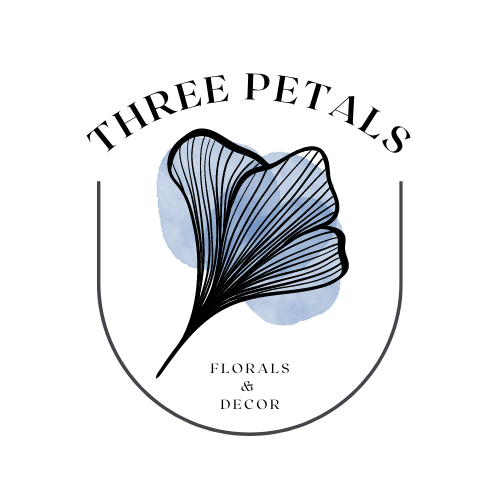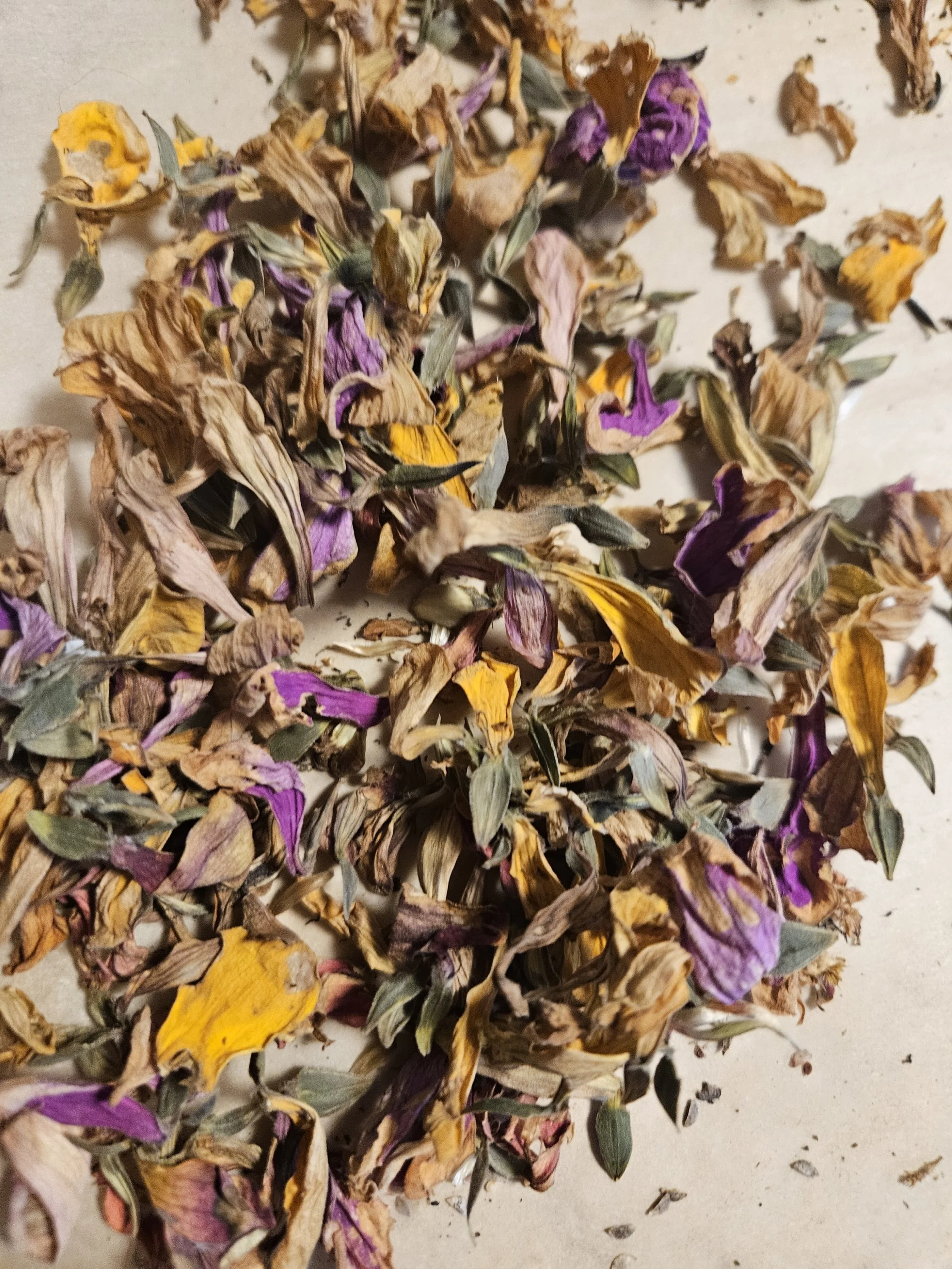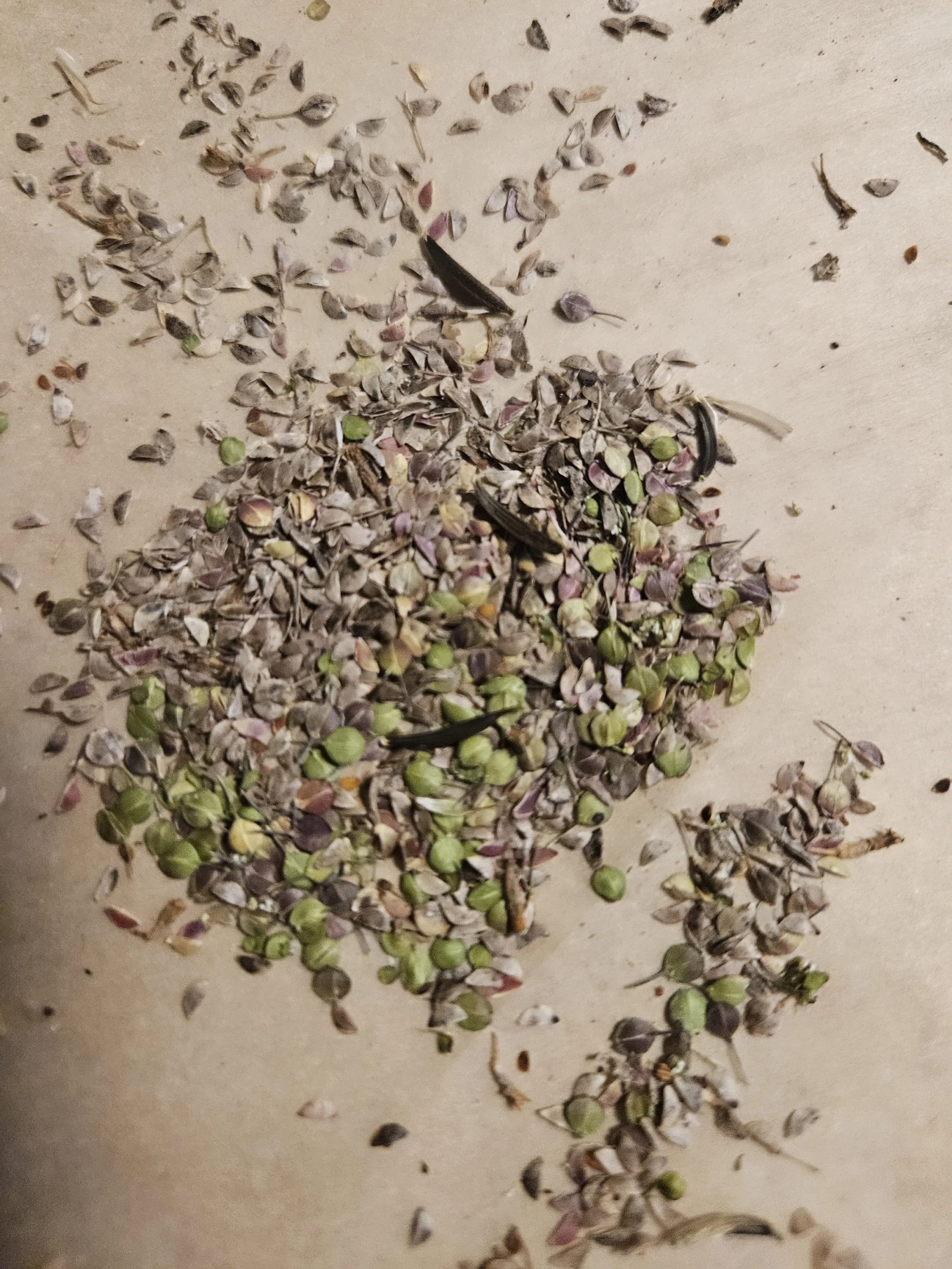Saving Seeds at the End of Our Growing Season
Every bloom we grow carries the promise of next year’s flower field tucked quietly inside — seeds waiting to start the cycle all over again. Around here, saving seeds isn’t just practical; it’s one of the most satisfying parts of the season. There’s something deeply grounding about knowing next year’s flowers are born from the ones we’ve nurtured this year.
Let’s talk about how we save seeds from a few of our favorites — cosmos, zinnias, and pennycress — and what their drying stages look like along the way.
🌸 Cosmos: The Wispy Dreamers
Cosmos are generous — they’ll bloom their hearts out all season long, and if you let them, they’ll happily give you hundreds of seeds.
Once the petals fall away, what’s left behind is a spiky little pod. At first, it’s green and soft — that’s your cue to wait. Once the pod darkens to a brownish-black and feels dry to the touch, it’s ready. You’ll notice the seeds are long, thin, and shaped like tiny needles. We cut the spent heads, spread them out on a screen, and let them air dry for a week or so before tucking them into envelopes labeled with the variety and date. Cosmos seeds store beautifully if you keep them cool and dry.
These cosmos seeds are night quite ready yet. You can tell because the seeds are still green. You want more of a darker color when when the seeds are ready. Another way to tell when the seeds are ready is they will start to fall out of the flower head when you touch it.
These seeds are much darker, and they look more dehydrated compared to the cosmos seeds in the photo above. These seeds are ready.
🌼 Zinnias: The Bold Givers
Zinnias are like fireworks in flower form — loud, colorful, and unforgettable. Their seed-saving process is just as rewarding.
When the bloom starts to fade and the petals crisp up, resist the urge to deadhead too early. The magic’s happening inside that cone-shaped center. Once it’s completely dry and brittle, pluck the petals and gently pull the seed head apart. You’ll find wedge-shaped seeds attached to the back of the old petals — those are your treasures. The trick is patience; if the head’s still soft or the seeds feel damp, let them sit out a bit longer. Mold is the enemy of seed savers.
These are a mix of our zinnia seeds. They are attached to the petal. Once everything dries out you can break the seed from the petal and store them for the next season.
Fun fact about zinnia seeds: The seed you harvest from a certain color flower will not always grow into that same color! You can get a variety of different colors from one single zinnia bloom.
🪶 Pennycress: The Tiny Rattlers
Pennycress might not have the showy appeal of zinnias or cosmos, but its silvery seed pods are pure charm — especially when they dry.
Early on, the pods are flat, green discs that shimmer in the sun. As they mature, they turn papery and light brown, and you’ll hear a faint rattle when you shake the stems. That’s your sign they’re ready. We cut whole stalks and hang them upside down in a dry spot for a couple of weeks. Once they’re crisp, we crumble the pods gently between our fingers to release the tiny round seeds hiding inside. They’re small but mighty — ready to bring that same silvery texture to next year’s bouquets.
These pennycress seeds are still in the process of drying out. You can see there is a mix of green pods (still drying) and brown pods (completely dry). We will store them once they all turn brown.
Why We Do It
Saving seeds isn’t just about sustainability — it’s about continuity. Each year’s blooms carry traces of the last: color quirks, petal shapes, even resilience to our unpredictable weather. By saving and replanting, we’re slowly crafting a line of flowers perfectly tuned to our little patch of earth. (And it also saves us money too!)
When you look out at a field full of blooms grown from your own saved seeds, it feels like watching old friends return home.






